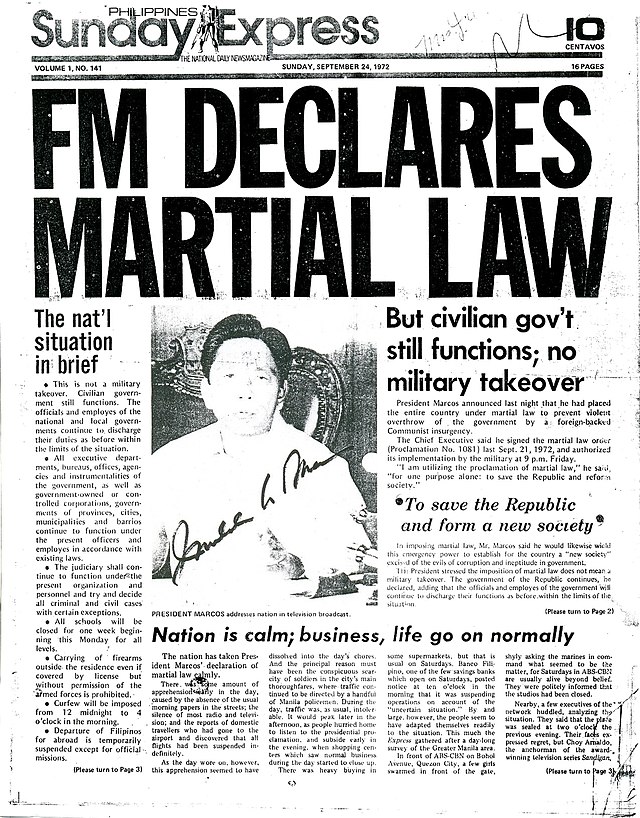Getting The News Articles To Work
Getting The News Articles To Work
Blog Article
The Definitive Guide to News Articles
Table of ContentsAll about News ArticlesNews Articles Can Be Fun For EveryoneNews Articles Can Be Fun For AnyoneNot known Details About News Articles More About News Articles
Great knowledge of different subjects offers students an one-upmanship over their peers. Despite the fact that electronic and social media sites are conveniently accessible, we should not forget exactly how essential it is to read the papers. Parents need to attempt and instill the routine of reading a paper as a day-to-day regimen to proceed the tradition of the revered print medium.Information stories likewise have at the very least among the adhering to essential features family member to the intended target market: proximity, prestige, timeliness, human rate of interest, quirk, or repercussion. The related term journalese is often used, generally pejoratively, to refer to news-style writing. An additional is headlinese. Papers usually adhere to an expository writing style.
Within these limitations, information stories additionally aim to be extensive. Among the larger and more respected papers, justness and equilibrium is a significant aspect in offering information.
Papers with an international audience, for instance, often tend to utilize a more official design of writing. News Articles.; usual style overviews include the and the United States Information Style Publication.
Little Known Facts About News Articles.
Generally, journalists will not make use of a long word when a short one will do. They use subject-verb-object building and construction and dazzling, active prose (see Grammar). They offer anecdotes, examples and allegories, and they rarely rely on generalizations or abstract concepts. News writers attempt to prevent using the exact same word greater than as soon as in a paragraph (sometimes called an "resemble" or "word mirror").
However, headings in some cases leave out the topic (e.g., "Jumps From Boat, Catches in Wheel") or verb (e.g., "Cat woman lucky"). A subhead (also subhed, sub-headline, subheading, caption, deck or dek) can be either a subservient title under the main headline, or the heading of a subsection of the short article. It is a heading that precedes the main message, or a group of paragraphs of the primary text.

of a post subject, source, or interviewee), it is described as a drawn quote or pull quote. Added signboards of any of these types may appear later in the article (specifically on subsequent web pages) to attract more reading. Journalistic sites often utilize computer animation strategies to exchange one signboard for another (e.g.
Our News Articles Diaries
Such billboards are also used as reminders to the write-up in other sections of the magazine or site, or as advertisements for the piece in other magazine or sites. News release of the Swiss federal government. Regular framework with title, lead paragraph (summary in bold), other paragraphs (details) and call details.
Example of a hard-lead paragraph NASA is recommending another area project. The budget plan demands approximately $10 billion for the project.
The NASA statement came as the firm requested $10 billion of appropriations for the task. An "off-lead" is the second essential front web page information of the day. The off-lead shows up either in the leading left edge, or straight listed below the lead on the. To "hide the lead" is to begin the post with background info or information of second value to the viewers, requiring them to learn more deeply right into a write-up than they ought to need to in order to find the important points.
Indicators on News Articles You Should Know
Usual use is that one or 2 sentences each create their very own paragraph. Journalists usually define the organization or structure of a newspaper article as an inverted pyramid. The necessary and most fascinating elements of a story are put at the start, with supporting info following in order of reducing relevance.
It site here permits individuals to explore a subject to just the deepness that their inquisitiveness takes them, and without the charge of details or nuances that they can think about irrelevant, however still making that details available to much more interested viewers. The inverted pyramid framework additionally allows short articles to be trimmed to any approximate size during design, to fit in the space readily available.
Some authors begin their tales learn the facts here now with the "1-2-3 lead", yet there are numerous type of lead readily available. This style invariably begins with a "5 Ws" opening paragraph (as defined above), adhered to by an indirect quote that serves to sustain a significant element of the first paragraph, and afterwards a direct quote to support the indirect quote. [] A twist can refer to numerous points: The last tale current program; a "delighted" story to finish the show.
Longer short articles, such as publication cover short articles and the pieces that lead the inside sections of a paper, are called. Feature tales differ from straight news in several methods. Foremost is the absence of a straight-news lead, the majority of the moment. Instead of using the essence of a tale in advance, attribute writers might try to draw viewers in.
The 6-Minute Rule for News Articles
An attribute's initial paragraphs usually associate an intriguing moment or occasion, as in an "unscientific lead". From the particulars of a person or episode, its view rapidly broadens to generalizations about the story's topic.

The Editor's Toolbox: A Reference Overview for Beginners and Professionals (2001) Allan M. Siegal and William G. Connolly. The New York Times Guidebook of Design and Use: The Official Design Guide Utilized by the Writers and Editors of the Globe's Many Authoritative Paper (2002) M. L. Stein, Susan Paterno, and R.
Report this page